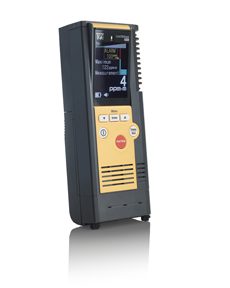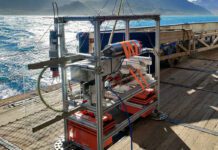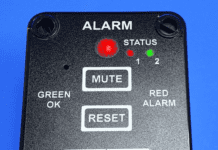
Detecting methane leaks for oil and gas distribution companies can be extremely difficult. Above ground pipelines can be out of reach and are often within restricted or gated locations. To effectively carry out surveys, lifting equipment may be required. However, this is expensive and still leaves the operator in a potentially hazardous situation. Other issues such as seeking permission for access to closed buildings or areas make detecting methane more difficult and obtrusive.
The LaserMethane mini (LMm) from Crowcon addresses these issues because it detects methane from up to 30m away (or 100m with a reflector). Its laser beam can penetrate transparent surfaces such as glass, meaning methane can be detected through the windows of closed premises, and confined spaces can be remotely and safely explored with no need for operator access.
Now with Bluetooth technology, the ATEX-approved LMm records real-time gas readings and GPS locations for storing. This allows important survey data, including gas level, time, date and location, to be combined, saved, or emailed to a central point.
“The introduction of SMART technology in our ATEX-approved LMm is an important step in its evolution,” says Louise Early, portfolio development manager, Crowcon. “IoT technology usage is surprisingly uncommon within the gas detection industry and its inclusion on the LMm detector puts Crowcon’s at the forefront of its development.”
Louise further explains: “Crowcon was approached by a major North American gas operator that needed gas detection designed specifically for inaccessible areas.
“LMm was selected, as it can remotely locate methane gas leakage from areas around gas pipes and other utilities located in homes and buildings. This pipe-work is usually located under floorboards and in some cases, can be in a locked home or building, which severely restricts access for testing access.
“In the event of a reported gas leak, it is imperative these areas are quickly monitored for gas, including prior to entry and with the possibility gas may have gathered. The LMm has been issued to leak response operatives and placed at substations, enabling effec¬tive routine leak detection and repair (LDAR) activities to take place.
“LMm has made detecting methane easier for some time now. These advances in technology answer the increasing desire for easy and real-time access to the data, keeping you safe on-site, and providing you with comprehensive and detailed records for future use”, concludes Louise.







